A bullet train gets you to a part of Japan tourists are yet to discover
By Keith Austin
On checking in at Sydney airport the woman on the Cathay Pacific desk is perplexed. She thought I was going to Kunming. In China. “Komatsu?” she muses. “I don’t think I’ve seen that one before.”
Our ultimate destination is Kanazawa, a city halfway up the spine of Japan and almost as little-known as the airport. We get there via Hong Kong and a 40-minute drive along a highway which hugs the coast and looks out to the Sea of Japan.
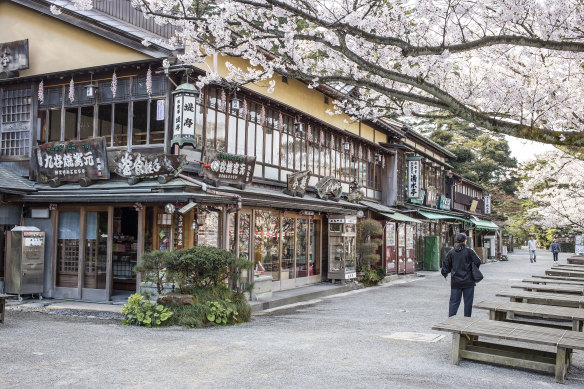
Kanazawa isone of the best-preserved Edo-period cities in Japan.Credit: InsideJapan
And while it might be little-known to anybody but seasoned visitors looking beyond the major tourist destinations, it’s becoming increasingly popular thanks to the bullet train link to Tokyo which arrived in 2015, the further, 125-kilometre link to Tsuruga which opened this year, and plans to extend again to Kyoto and Osaka beyond that.
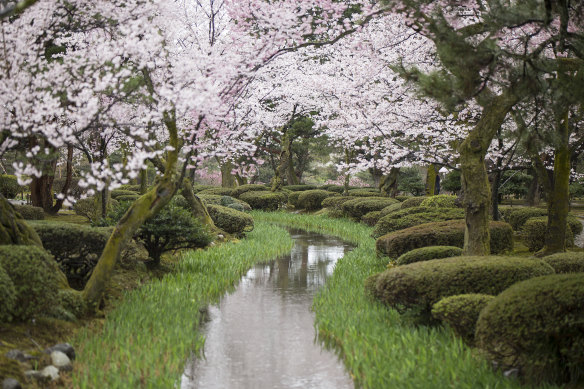
Kenrokuen Garden during cherry blossom season.Credit: InsideJapan
The capital of Ishikawa Prefecture, with a population of about 500,000, Kanazawa was one of the few major Japanese cities spared destruction by air raids during World War II and is known for its Edo period-style architecture. Easily walkable and unspoilt by an oversupply of tourists, Kanazawa is worth adding to any itinerary.
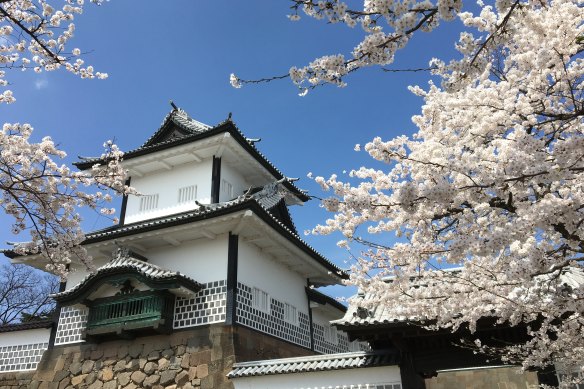
Kanazawa Castle: visitors can have a more personal experience with the art and the artisans in the prefectural capital.Credit: InsideJapan
You could do worse than starting in Kenrokuen (Six Attributes) Garden. Known today as one of the three great gardens of Japan, it was first fashioned as a private garden sometime in the 1600s by the Maeda clan. Organised according to the six attributes of a perfect landscape – spaciousness, seclusion, artifice, antiquity, waterways, and panoramas – the garden sits next to Kanazawa Castle and contains 8750 trees. The garden is notable for its winter yukitsuri, the conical rope arrangements which support certain tree branches and protect them from damage caused by heavy snow. Believe it or not, people visit just to gaze at the different types of moss. Moss anoraks? Moss twitchers? Moss spotters?
The first glimpse of Kanazawa Castle and its typical soaring eaves architecture, is quite something. Sadly for the purists, there’s very little of the original castle buildings left and the reconstructions, though impressive, are quite recent. Given that the place was started in about 1580, totally reconstructed in 1592 and various bits of it burnt down in 1602, 1631, 1759 and 1881, it’s probably best not to light a gasper in the grounds.
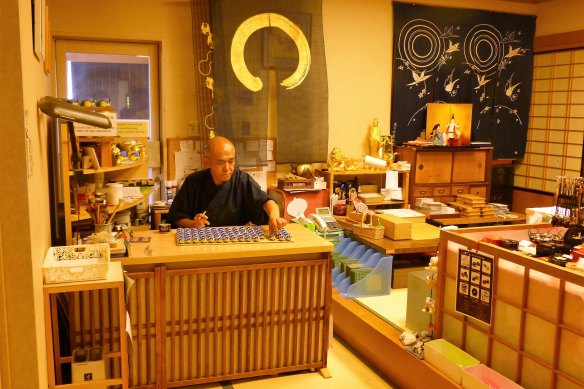
Kanazawa Gold Leaf SakudaCredit: InsideJapan
Historically, Kanazawa has been called Little Kyoto, mainly due to a maze-like and beautifully preserved geisha district – Higashi Chaya-Gai – that rivals Kyoto’s Gion (but without the crowds). Built in 1820 as an entertainment area for the upper classes, most of the traditional wooden tea houses are now restaurants, cafes, and souvenir shops but that in no way detracts from its rural charm. The main drag is one of the most photographed streets in Japan. Do check out the Chayu ice-cream shop in the main square. Among the bizarre flavours on offer is black charcoal pistachio.
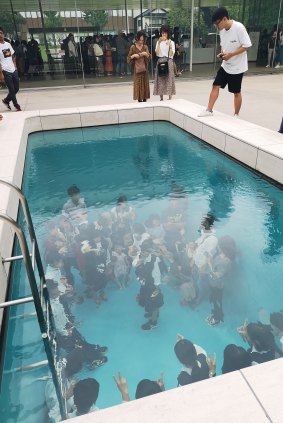
21st Century Museum of Contemporary Art.Credit: InsideJapan
While in Higashi Chaya-Gai, you simply cannot miss the Sakuda Gold Leaf shop. Some 99 per cent of domestic gold leaf is produced in Kanazawa, made by beating gold into sheets one 10,000th of a millimetre thick - so thin that it can disappear at a touch. A gold coin about the size of a 10c piece can be beaten into a sheet the size of your average Japanese tatami mat. At the Sakuda shop you can watch the process, take a tour, and get in on the act yourself with a workshop. Gold leaf is chucked at pretty much anything in these parts – including tea, ice-cream, sushi, soap, and face masks.
A short walk from Kenrokuen Garden is the 21st Century Museum, a circular, low-lying building made mostly of plate glass – reflecting transparency, inclusiveness, etc - and showcases a revolving door of modern art that will thrill or drive you to despair. What it won’t be is dull. Expect to be castigated by the somewhat over-zealous gallery assistants, who object to gum chewing and pointing.
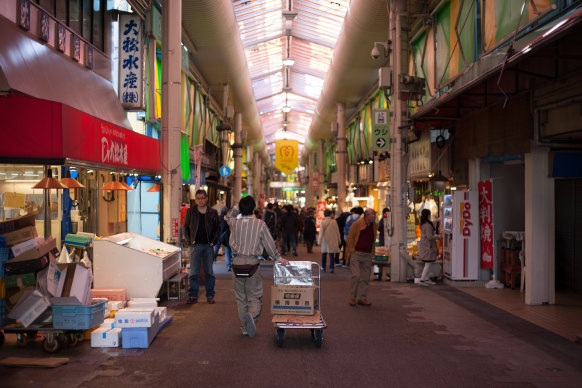
Omicho fish market ... nearly 300 years and still going strong.Credit: InsideJapan
You will definitely need your pointing finger at the Omicho fish market, though. There has been a version of this market here for close to 300 years and, with 185 stalls along its length, it’s still going strong. Colourful, noisy, hectic, crowded, and fishy.
There were things there I wouldn’t know whether to eat, stuff, throw at people, or wear as a hat. This is a total feast and freak show for the senses but be aware that Sundays and Wednesdays can be quiet.
The writer was a guest of InsideJapan Tours and Cathay Pacific.
THE DETAILS
TOUR
InsideJapan Tours offers small group tours, tailored self-guided adventures and cultural experiences in Japan. Hotels are chosen based on the individual traveller’s needs and budget. InsideJapan Tours’ new 15-day ‘Hidden Zen’ Self-Guided Adventure includes Kanazawa, from $11,457 per person (twin share). See insidejapantours.com
FLY
Cathay Pacific flies daily from Sydney and Melbourne to Osaka and Tokyo, via Hong Kong. Flights to Komatsu Airport go via Hong Kong and Tokyo’s Haneda Airport. See cathaypacific.com/au
Sign up for the Traveller Deals newsletter
Get exclusive travel deals delivered straight to your inbox. Sign up now.